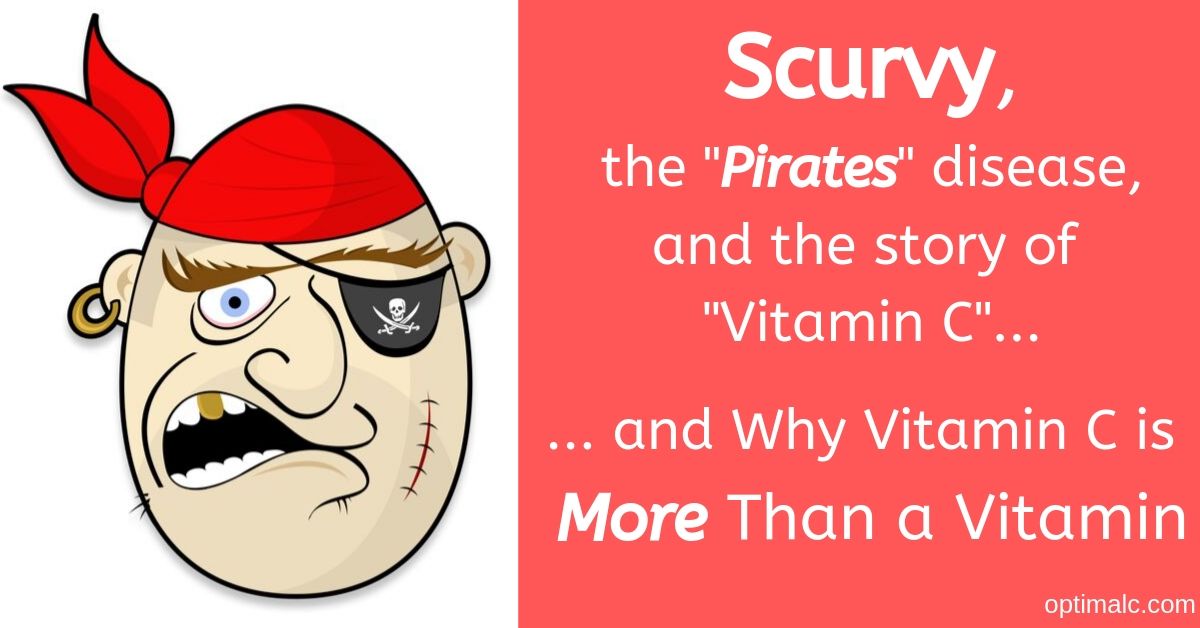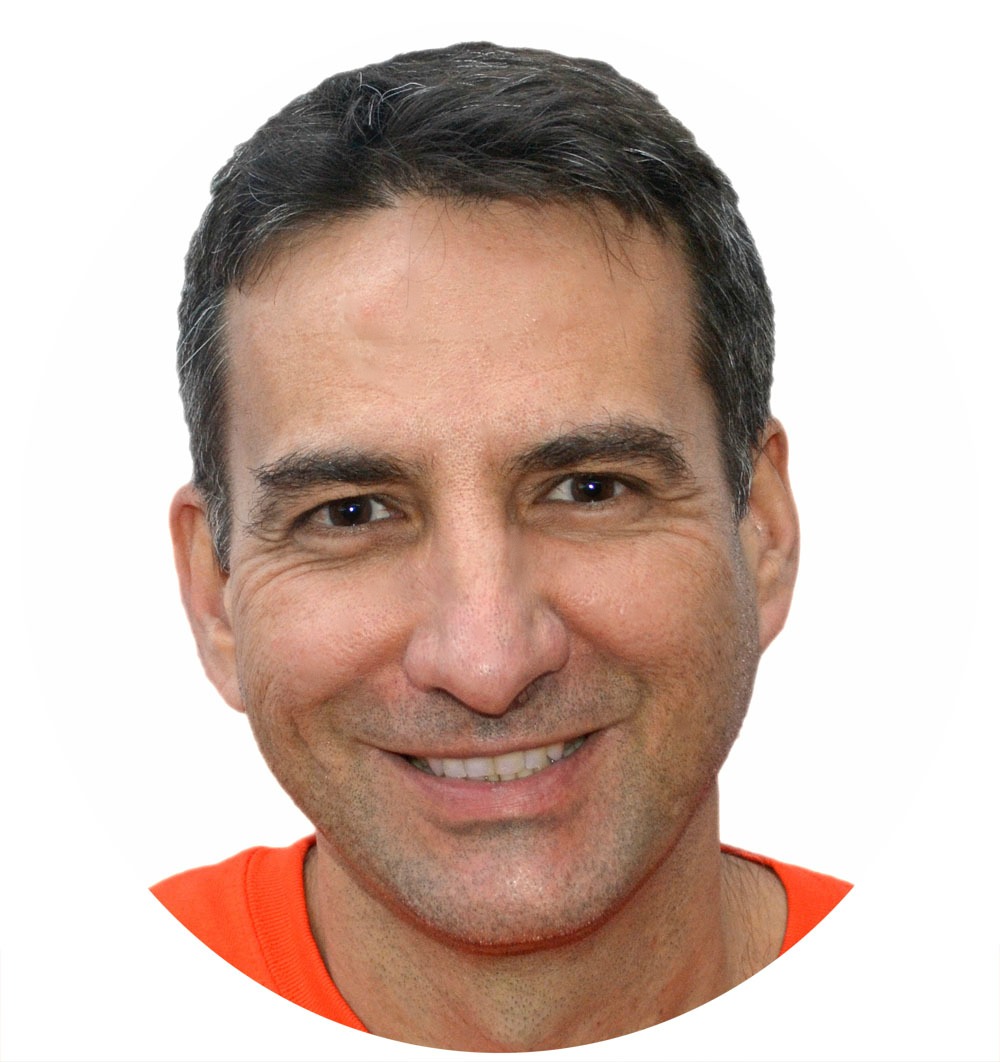Scurvy Disease, the Vitamin C Story and Why is More than a "Vitamin"
By Arturo Galindo, Cert. Nutritional Therapist
The scurvy disease is low vitamin C and it has very specific late symptoms. Some of them are loose teeth, bleeding gums and slow-healing wounds.
But a lack of enough vitamin C in the body can lead to other chronic diseases. This includes cancer, heart disease, infections, allergies, among others.
Now, the scientific name of Vitamin C is ascorbic acid. But the ascorbic acid substance is more than a vitamin. Your body needs enough vitamin C to maintain good health and fight disease.
The problem is that many people are still not aware of this.
One reason is that ascorbic acid was already named a "vitamin" many years before its discovery. Before scientists understood the value of ascorbic acid to the body. Not only its nutritional value as a "vitamin".
To understand why this happened, we need to know a little bit of history. The story of ascorbic acid is the story of the scurvy disease and the story of vitamins.
 The scurvy disease is low vitamin C and it has very specific symptoms. But a lack of enough vitamin C in the body can lead to other chronic diseases. This is because vitamin C is more than a vitamin.
The scurvy disease is low vitamin C and it has very specific symptoms. But a lack of enough vitamin C in the body can lead to other chronic diseases. This is because vitamin C is more than a vitamin.We've prepared this short video for you. You'll learn what our site is about and how you can use this information to improve your health...
Subscribe and Get Our Free eBook!
|
|
Important: Ascorbic acid or vitamin C is more than a vitamin.
Why? It regulates many functions in your body to make sure they're doing their best job in keeping you healthy!
|
The Unknown Substance that “Cured” Scurvy Disease
Many years ago, sailors would die when taking long trips. This was until someone discovered the cure that protected sailors from scurvy disease... in citrus fruits and lemons.
This was first documented in 1617 by English military surgeon John Woodall in The Surgeon’s Mate... and then published in 1753 by naval surgeon James Lind in A Treatise of Scurvy.
The cure for scurvy existed for almost 200 years... before the medical profession finally caught on.
In the early 1800s, the medical profession finally accepted the cure for scurvy. An unknown substance in citrus fruits which prevented people to die from scurvy.
The Unknown Substance is Labeled Vitamin C
In the early 1900's, chemists found trace substances in food that were vital to health.
Some of these substances were “fat-soluble” (group A). Others were “water-soluble” (group B).
Years later, a chemist changed the names of these substances to “vitamin A” and “vitamin B”...
...and he also gave the name "vitamin C" to the anti-scurvy substance in citrus fruits that cured scurvy disease. (Asimov, 1972)
What was the problem with that? The big assumption that this "unknown" substance was also needed in small or trace amounts.
The "vitamin" label was given...
- Before chemists separated or isolated this substance from food... citrus fruits or other food sources.
- Before chemists determined the chemical structure of this substance
- Before chemists understood the value of this substance to the body
- Before chemists even came up with the name ascorbic acid or ascorbate
Scientists assumed that “vitamin C”, a substance that was still unknown, would have properties like the other vitamins... and that the body would only need it in small "trace" amounts.
A Chemist Finds the Substance that Cures Scurvy... Ascorbic Acid
And finally, in 1937, a chemist was able to separate or isolate the substance in citrus fruits... the substance that cured scurvy.
He called this substance ascorbic acid or ascorbate.
The chemist was Albert Szent-Gyorgyi, who won the Nobel prize.
Dr. Gyorgy found that ascorbic acid is closely related to the sugar glucose, a primary source of energy in the body.
And this discovery allowed companies to produce vitamin C crystals and powders in large quantities... from sugars like corn
Scientists Rush to Research Ascorbic Acid But Use Only Small "Vitamin" amounts….
Albert Scent-Gyorgy discovered ascorbic acid or vitamin C in 1933. And this discovery triggered thousands of medical research.
Dr. Dyorgy won the Nobel Prize in Physiology or Medicine in 1937. And by then, there were thousands of medical studies done using vitamin C for many diseases.
But there was a big problem. Most researchers doing these scientific studies were biased. They focused on the nutritional and vitamin aspects of ascorbic acid, or "vitamin C".
Scientist used ineffective small amounts of ascorbic acid. And scientists repeated the same mistake year after year in most of these studies.
“Scientists thought of ascorbic acid as a “vitamin” and as a “vitamin” they expected miracles from trace amounts” – Irwin Stone, American Biochemist, dedicated 40 years to research Vitamin C
Few Researchers Used Right Amounts of Ascorbic Acid...
It’s difficult to understand how many researchers failed to understand the one thing that would have given positive results in all of the early studies on vitamin C…
Dose amount and frequency.
One of the researchers that did realize the importance of proper dose and frequency was Dr. Frederick Klenner.
Dr. Klenner became a pioneer in treating viral diseases with large doses of ascorbic acid in the late 1940s. He found dramatic results in diseases such as poliomyelitis.
These results have been largely ignored by the medical profession to this date.
“As time passed and more facts were gathered, “vitamin C” was not behaving like a typical vitamin. Scientific studies proved that nearly all animals manufacture it in their own bodies. And they never got scurvy, no matter how little vitamin C was in their bodies." - Irwin Stone, American Biochemist, dedicated 40 years to research Vitamin C
Today, More Scientist and Doctors Understand The True Value of “Vitamin C”
The good news is that more and more scientists and doctors today understand the true value of ascorbic acid to the body and how it influences almost every function in the body.
For example, many alternative clinics use vitamin C therapy as one of the most effective weapons against disease.
The evidence is overwhelming and can’t be hidden.
Eventually, more and more people will awake to the fact that low vitamin C can lead to many other chronic diseases and have many symptoms.
The other symptoms of a vitamin C deficiency include many of the chronic diseases that affect us today such as cancer, heart disease, infections, allergies. Here's a study about vitamin C deficiency and depletion in the US.
Did you know cancer patients have one of the lower levels of vitamin C in the body? These people are told by doctors that they have cancer, not the scurvy disease.
Linus Pauling said, in the book Vitamin C and Cancer... "vitamin C may be the most important of all nutrients in the control of cancer."
It took the medical profession 200 years to accept the cure of scurvy. The "magic" substance inside citrus fruits, such as oranges and lemons. The substance that was later identified as ascorbic acid, or vitamin C.
Vitamin C has existed as a “vitamin” for so long that, for many people still, it can only exist as a vitamin.
This is old knowledge that will eventually die.
Sources
- Stone, I. (1972) The Healing Factor, Vitamin C Against Disease
|
|
By Arturo Galindo
Certified Nutritional Therapist I have used vitamin C and nutrition for over 10 years to end my chronic diseases and help my family stay healthy. Learn about our story.
|
Subscribe and Get Our Free eBook!
Related Pages
The symptoms of scurvy are obvious. But you can still have low Vitamin C and not show any signs of scurvy. And this can lead to other chronic diseases.
A lack of vitamin C can lead to allergies, infections, heart disease, cancer. But enough vitamin C can heal and prevent disease. Why are people not aware?
Follow us on Social Media!
How do you feel about what you just read?
Share This Page
One more way to share OptimalC.com ...
Would you prefer to share this page with others by linking to it?
- Click on the HTML link code below.
- Copy and paste it, adding a note of your own, into your blog, a Web page, forums, a blog comment, your Facebook account, or anywhere that someone would find this page valuable.











Facebook Comments
Have your say about what you just read! Leave a comment in the box below.